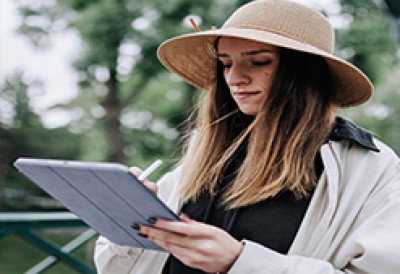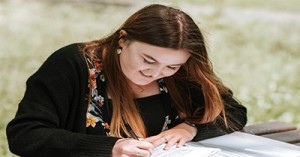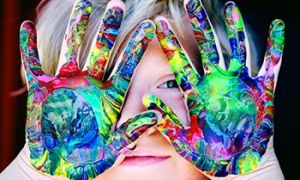The following list of questions helps educators critically reflect on their supervision practices, ensuring a balance between safety, engagement, and autonomy.
Inside Supervision
- How do I position myself to ensure I have a clear view of all children?
- What strategies do I use to balance active engagement with children while maintaining supervision?
- How do I support children’s autonomy while ensuring their safety indoors?
- How do I respond to potential hazards in the indoor environment?
- How do I ensure equitable supervision, giving attention to all children, not just those who demand it?
- How do I adapt my supervision approach based on children’s developmental needs and behaviors?
- How do I facilitate smooth transitions between activities while maintaining supervision?
- How do I encourage children to take responsibility for their environment while ensuring safety?
- How do I collaborate with colleagues to ensure seamless supervision indoors?
Outside Supervision
- How do I position myself to maximize visibility and responsiveness in outdoor spaces?
- How do I balance risk-taking opportunities with safety in outdoor play?
- How do I ensure children are engaging in meaningful play while maintaining supervision?
- How do I respond to unexpected situations, such as conflicts or injuries, in outdoor settings?
- How do I support children’s exploration while maintaining appropriate boundaries?
- How do I adjust my supervision strategies based on weather conditions and environmental factors?
- How do I encourage children to develop spatial awareness and responsibility for their surroundings?
- How do I ensure supervision remains proactive rather than reactive?
- How do I communicate effectively with colleagues to ensure comprehensive outdoor supervision?
Team Collaboration & Communication
- How do we ensure clear and consistent communication among team members during supervision?
- How do we support each other in maintaining active supervision throughout the day?
- What strategies do we use to address supervision challenges as a team?
- How do we ensure all educators feel confident and supported in their supervision roles?
- How do we handle transitions between indoor and outdoor supervision to maintain continuity?
Safety & Risk Management
- How do we collectively assess and minimize risks in the environment?
- How do we ensure all children are accounted for at all times?
- What protocols do we follow in case of emergencies or unexpected incidents?
- How do we balance safety with allowing children to take appropriate risks in play?
- How do we ensure supervision remains proactive rather than reactive?
Child Engagement & Support
- How do we ensure supervision fosters meaningful interactions with children?
- How do we support children’s autonomy while maintaining safety?
- How do we adapt supervision strategies to accommodate diverse learning needs?
- How do we ensure equitable supervision, giving attention to all children?
- How do we encourage children to take responsibility for their environment while ensuring safety?
Reflection & Continuous Improvement
- How do we reflect on our supervision practices to identify areas for improvement?
- How do we incorporate feedback from colleagues, families, and children into our supervision approach?
- What professional development opportunities could enhance our supervision skills?
- How do we ensure our supervision practices align with best practices and regulations?
- How do we support new team members in developing effective supervision strategies?
Further Reading
Active Supervision In Early Childhood Settings
NSW Staff Ratios and Adequate Supervision
Reflection Questions For Quality Area 2
ACECQA Publishes New Guidance Information On QA2







 Here is the list of the EYLF Learning Outcomes that you can use as a guide or reference for your documentation and planning. The EYLF
Here is the list of the EYLF Learning Outcomes that you can use as a guide or reference for your documentation and planning. The EYLF The EYLF is a guide which consists of Principles, Practices and 5 main Learning Outcomes along with each of their sub outcomes, based on identity,
The EYLF is a guide which consists of Principles, Practices and 5 main Learning Outcomes along with each of their sub outcomes, based on identity, This is a guide on How to Write a Learning Story. It provides information on What Is A Learning Story, Writing A Learning Story, Sample
This is a guide on How to Write a Learning Story. It provides information on What Is A Learning Story, Writing A Learning Story, Sample One of the most important types of documentation methods that educators needs to be familiar with are “observations”. Observations are crucial for all early childhood
One of the most important types of documentation methods that educators needs to be familiar with are “observations”. Observations are crucial for all early childhood To support children achieve learning outcomes from the EYLF Framework, the following list gives educators examples of how to promote children's learning in each individual
To support children achieve learning outcomes from the EYLF Framework, the following list gives educators examples of how to promote children's learning in each individual Reflective practice is learning from everyday situations and issues and concerns that arise which form part of our daily routine while working in an early
Reflective practice is learning from everyday situations and issues and concerns that arise which form part of our daily routine while working in an early Within Australia, Programming and Planning is reflected and supported by the Early Years Learning Framework. Educators within early childhood settings, use the EYLF to guide
Within Australia, Programming and Planning is reflected and supported by the Early Years Learning Framework. Educators within early childhood settings, use the EYLF to guide When observing children, it's important that we use a range of different observation methods from running records, learning stories to photographs and work samples. Using
When observing children, it's important that we use a range of different observation methods from running records, learning stories to photographs and work samples. Using This is a guide for educators on what to observe under each sub learning outcome from the EYLF Framework, when a child is engaged in
This is a guide for educators on what to observe under each sub learning outcome from the EYLF Framework, when a child is engaged in The Early Years Learning Framework describes the curriculum as “all the interactions, experiences, activities, routines and events, planned and unplanned, that occur in an environment
The Early Years Learning Framework describes the curriculum as “all the interactions, experiences, activities, routines and events, planned and unplanned, that occur in an environment


